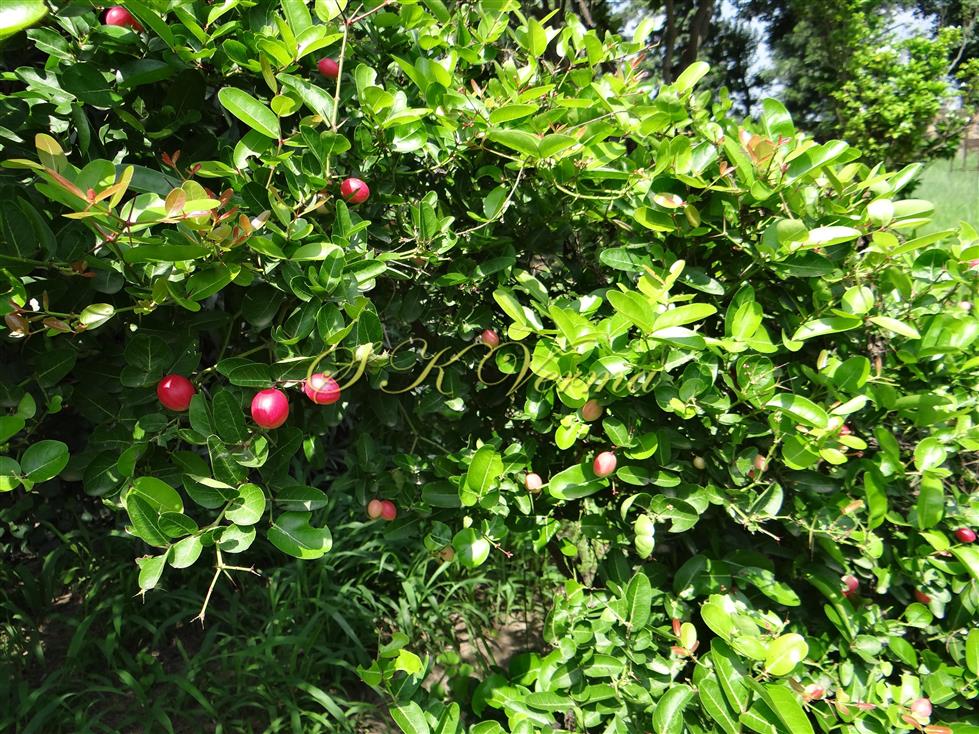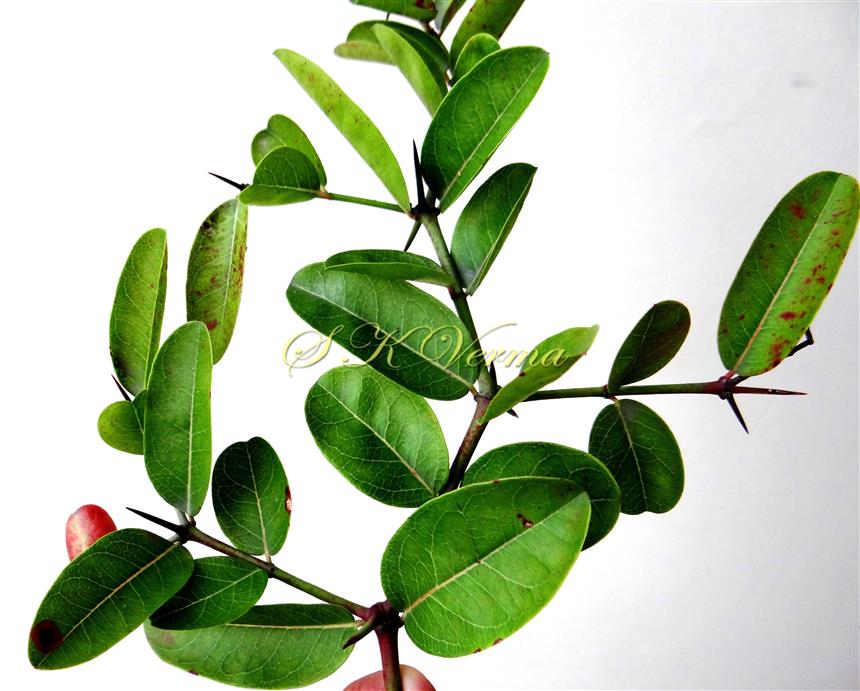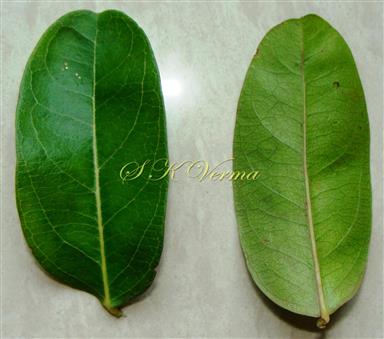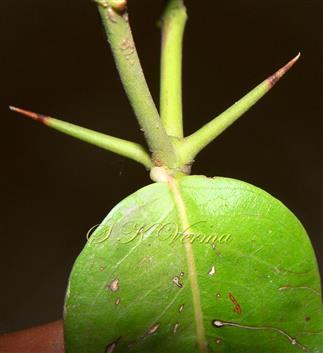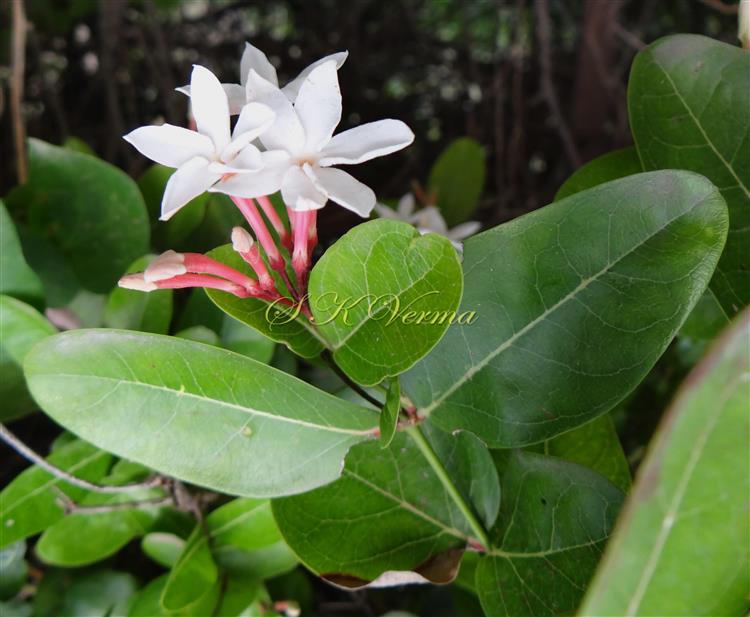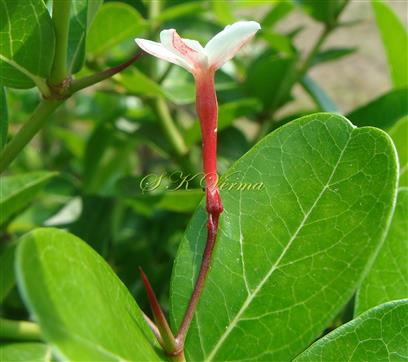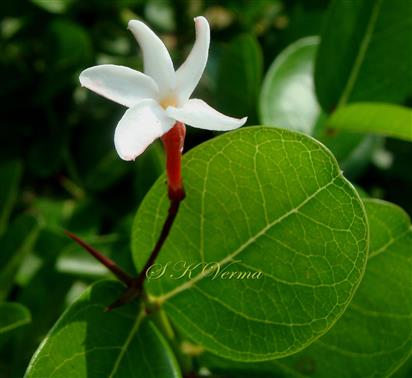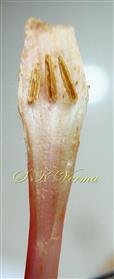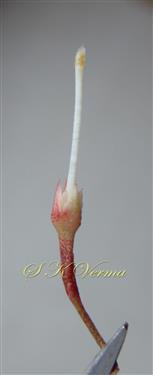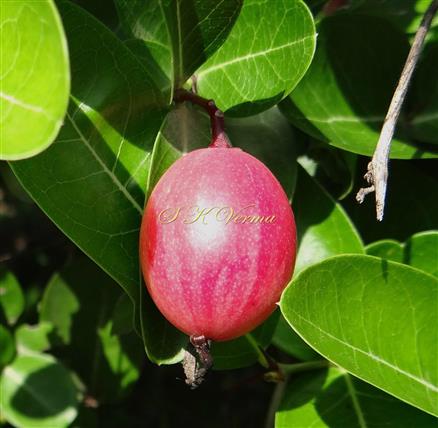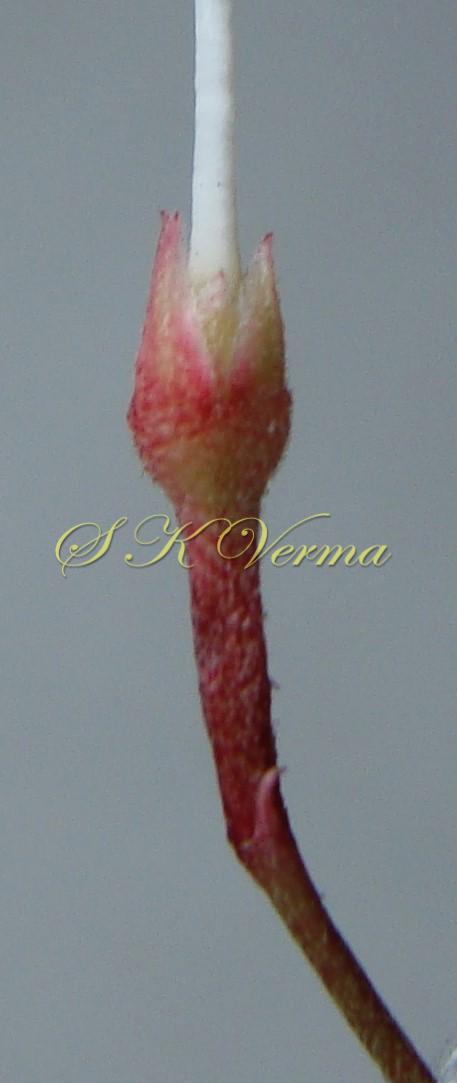CARISSA
Carissa
L., Mant. Pl. 1: 7. 1767; DC., Prodr. 8: 332. 1844; Benth. & Hook. f. Gen. Pl. 2: 695. 1876; Boiss., Fl. Or. 4: 44. 1879; Hook. f., Fl. Brit. Ind. 3: 630. 1882; Bailey, St. Cyclop. Hort. 1: 664. 1947; Cooke, Fl. Pres. Bomb. 2: 124. 1904; Talbot, For. Fl. Bomb. Pres. Sind 2: 205. 1911; Fl. China @ eFloras.org 16: 146; Nazim. & Qaiser, Fl. Pak. @ eFloras.org p. 10. .
Shrubs, climbers or small trees; densely branched, branches dichotomous; mostly armed, spines straight or axillary recurved. Leaves opposite, coriaceous; petiole 2-3 mm. Cymes terminal or axillary, dichotomous or trichotomous, pedunculate, usually many flowered. Flowers bisexual, actinomorphic, 5(or 4)-merous, hypogynous. Calyx 5-partite, without glands or rarely with many basal glands inside, lobes acute. Corolla salverform, contorted in the bud, tube cylindric, dilated at staminal insertion, lobes overlapping to left or right. Stamens included in throat, free; anthers lanceolate, obtuse or apiculate; disc absent. Carpels 2, syncarpous; ovary 2-locular; ovules 1-4 in each locule, rarely numerous, biseriate; style filiform; pistil head narrowly oblong or fusiform, apex shortly 2-cleft. Berries 1- or 2-loculed, somewhat ellipsoid or globose. Seeds 2 or more, glabrous.
10 species
Carissa carandas
Carissa carandas
L., Mant. Pl. 1. 52. 1767; DC., Prodr. 8: 332. 1844; Brandis, For. Fl. 320. 1874; Hook. f., Fl. Brit. Ind. 3: 630. 1882; Parker, For. Fl. Pun. ed. 1: 328. 1918 (Reprint 1973); ed. 2: 331. 1921; Bailey, St. Cyclop. Hort. 1: 664. 1947; Stewart, Ann. Cat. Vas. Pl. W. Pak and Kashm. 564. 1972; Fl. China @ eFloras.org 16: 146; Nazim. & Qaiser, Fl. Pak. @ eFloras.org p. 10.
Shrubs, small trees or climbers to 5 m tall, with white milky sap. Branches dense, dichotomous, spreading, glabrous, spines 2-2.5 cm long, mostly straight (sometimes forked). Leaves opposite, broadly ovate to oblong, 3-8 cm x 1.5-4 cm, subcoriaceous, young leaves with pink midrib, margin entire, base broadly cuneate to rounded, apex emarginate, shortly apiculate, glabrous; lateral veins ca. 8 pairs, ascending, convergent, anastomosing near the margin; petiole short, ca. 2 mm long. Inflorescence terminal cymes, usually 3-flowered; peduncle pink, 1.2-2.5 cm long; bracts subulate, hairy. Flowers actinomorphic, bisexual, 5-merous, hypogynous, white, often tinged with pink, ca. 2 cm across, scarcely fragrant. Calyx 3-5 mm long, pubescent, cleft halfway down, lobes 5, acute; calyx with many basal glands inside. Corolla white tinged with pink or pale rose; salverform; tube cylindric, 1.5-2 cm long, glabrous, swollen and pubescent near the top; lobes lanceolate, ca. 1 cm, acute, overlapping to the right in bud, puberulent. Stamens 5, inserted in throat, free; anthers lanceolate, obtuse or apiculate. Disc absent. Ovary single, 2-locular, with many ovules in each loculus, placentation axile; style filiform; pistil head narrowly oblong or fusiform, apex shortly 2-cleft. Berries reddish purple, ellipsoid, globose or ovoid, 1.5-2.5 cm x 1-2 cm, when ripe white with red shade then purplish black, having milky juice, 4-8 seeded.
Common Names: Bengal Currant, Christ’s Thorn, Carandas Plum, Karanda; Karonda (Hindi)
